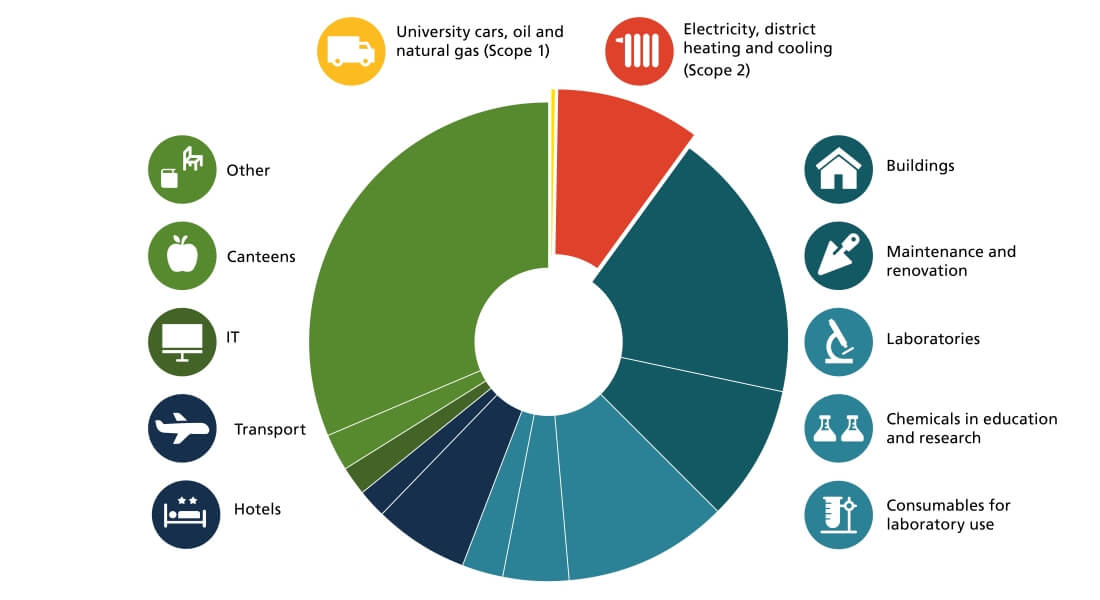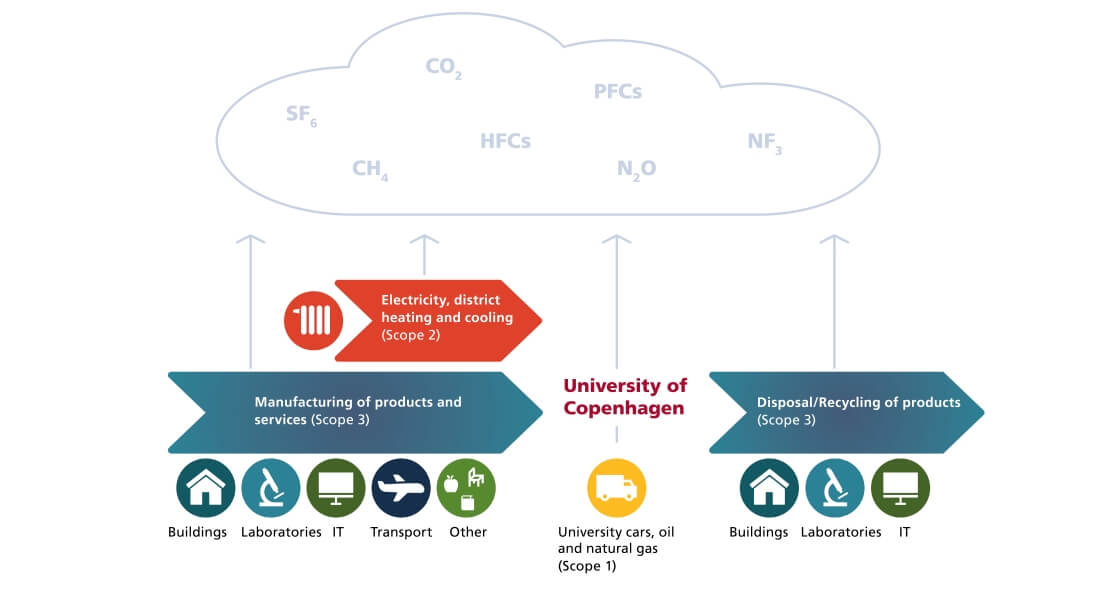UCPH will: Reduce its overall climate footprint per full-time equivalent (FTE) by 50% in 2030.
The University of Copenhagen works with climate because the transition to a sustainable society requires a massive effort. As a large institution with thousands of employees and students, UCPH has a significant climate and resource footprint. Therefore, the sustainability efforts towards 2030 must take responsibility for the university's global climate footprint and reduce UCPH's climate impact in a life-cycle and holistic perspective.
UCPH has assessed that the current best basis for estimating the university’s climate impact is a life-cycle input-output approach. Based on UCPH’s total procurement for 2018, UCPH has made an estimate of UCPH’s total climate footprint and the most important climate action categories.

The estimat reveals that the climate footprint from production and manufacturing of products and services accounts for approx. 85 % of the total climate footprint. Energy Consumption (Scope 1 and 2) accounts for a small amount of the climate footprint (10-15 %). The calculation contains uncertainties, but shows that a number of UCPH’s uses of areas and facilities, products and services account for a remarkable part of UCPH's climate footprint.
A developing method
A lifecycle-based approach comprising all CO2-eq emissions is challenging and methodologically still under development, but it is expected to become more widely used in the future.
In the years to come, rapid methodological development is expected in this field, both nationally and internationally. UCPH will monitor and contribute to the development of knowledge, and adjust its approach and reassess the calculations accordingly.
UCPH is working towards 2030 with six key initiatives aimed at reducing the university’s total climate footprint. These initiatives include requirements for product manufacturing and recycling, optimization of resource consumption, and a general reduction in the use of materials and equipment. Read more about UCPH’s six key initiatives.
As part of this effort, UCPH is also working to make the university’s buildings and facilities more sustainable through energy optimization, the use of responsible materials, and better utilization of campus areas. Read more about how UCPH works with sustainable buildings.
What is a total climate footprint?
An organisation's emissions can be divided in three categories (Scope 1, Scope 2 and Scope 3).

Scope 1 concerns direct emissions from fuel, oil and gas. At UCPH this primarily concern emissions from cars, boats and use of city gas in laboratories.
Scope 2 concerns indirect emissions from energy consumption within the organisation. At UCPH this concern emissions from electricity and district heating and cooling.
Scope 3 concerns all other emissions in relation to activities at the university. This can be in relation to manufacturing of products, equipment, maintenance, services etc.
Contact
Would you like to know more about UCPH’s sustainability efforts? Please contact: sustainable@ku.dk


